It was a food tour, after all
In our last post we shared some impressions of Morocco from our recent trip. Today we’re going to finish this series with some notes about the Moroccan food that we saw and tasted while we were there.
We had signed up for an 11 day “Food Adventure” tour that would take us around the country and give us opportunities to sample the local cuisine and learn how to prepare different dishes. And even though we had to leave the tour early, we still were able to try a variety of Moroccan dishes.
Where else would we start?
Whenever we visit a new place, one of our first stops is a grocery store. We like to see what people who live there are buying, to see what is similar to where we live and what is unique. It’s also interesting to compare prices.
And no matter what else we might buy, we’ll always buy a bag of potato chips. In Casablanca we found some new flavors. There was Fromage + Oignons – Cheese and Onions. (Morocco was a French colony from 1912 until 1956 and French is commonly spoken there.)
The kebab chips sounded interesting, so we bought a package for 10.75 Moroccan dirhams (MAD). At roughly 10 MAD to $1 USD, the bag cost about $1.08 or €1. After we tasted them, we wished we’d bought the Fromage + Oignons!
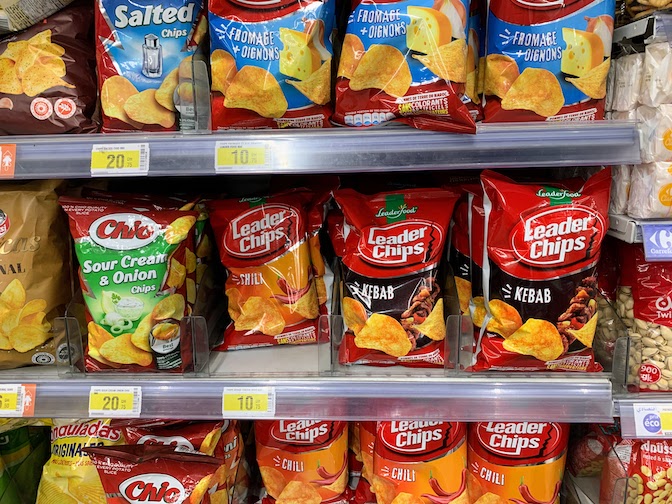
Couscous was for sale in larger packages than we were used to seeing. Then again, this is a different product that what is available in most US grocery stores. (We’ve never tried to buy it in Portugal, so can’t comment.) More on couscous below.
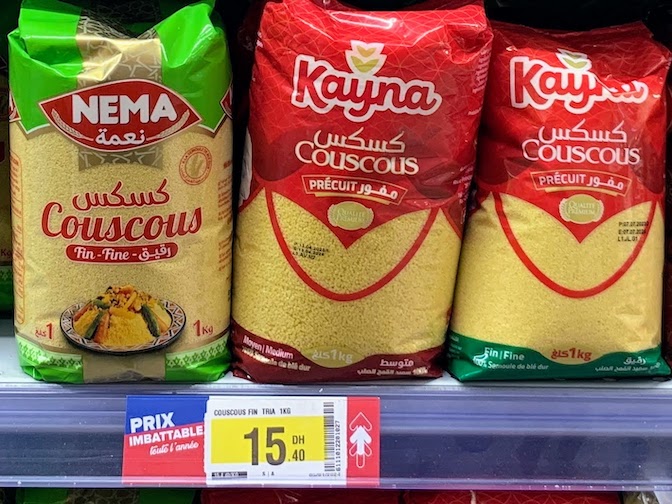
Some interesting sights
In several places we visited, we saw “community ovens”. These were wood-fired ovens that were available for people and businesses in the neighborhood. They would bring in trays of pastries or loaves of bread and leave them to be baked by the attendant. The rooms were always warm and full of delicious smells.
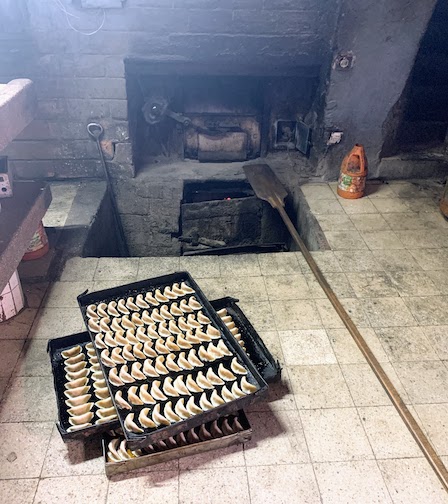
Morocco is a majority Muslim country and in Islam, consuming alcoholic beverages is forbidden. But they are available, if not openly promoted. We never saw any listed on restaurant menus, but they can be found in special areas of some grocery stores. We tried some locally-produced beer and wine. Both were very good.
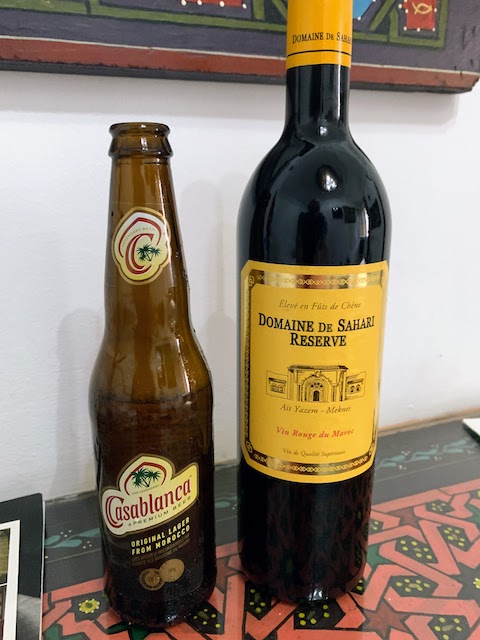
The medinas, or markets, we visited often had areas where different food vendors operated. They seemed to compete to see who could have the most colorful displays.
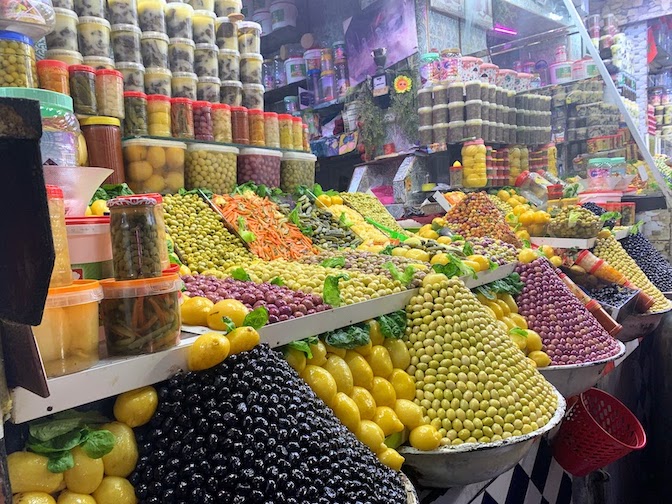
Small shops selling a variety of spices were usually close to the food stalls. While not as colorful, the array of spices on display made us wish for a place like this back in Lisbon!
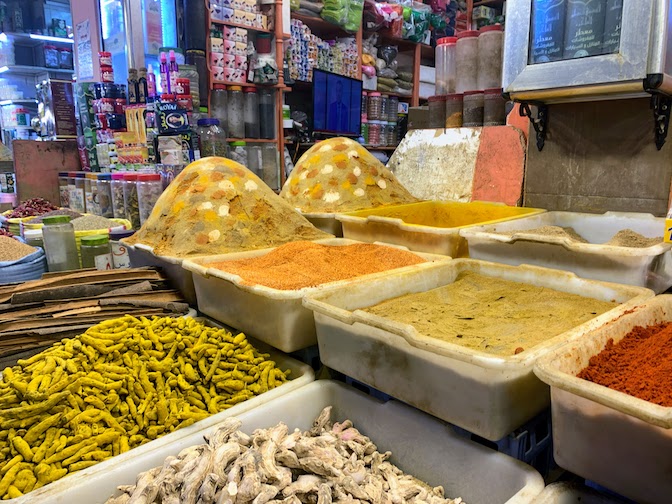
Mint tea is an essential element of Moroccan cuisine and culture. It is often served as a gesture of hospitality to guests. Pouring the tea is almost a bit of performance art. The tea is poured into small glasses, beginning with the spout close to the glasses and then gradually raising and lowering the pot.
The British travel writer Alice Morrisey moved to Morocco and wrote about her life and adventures there. She once asked why Moroccans pour their tea that way and was told, “It is to connect the heavens with the earth”.1
After the first few glasses are filled, they are often poured back into the pot to mix the mint and sugar, and the pouring ritual is repeated.
Everyone in our tour group probably secretly wanted to try to do the pouring. At one evening meal, our friend Steve did it. He had a steady hand and a good aim.
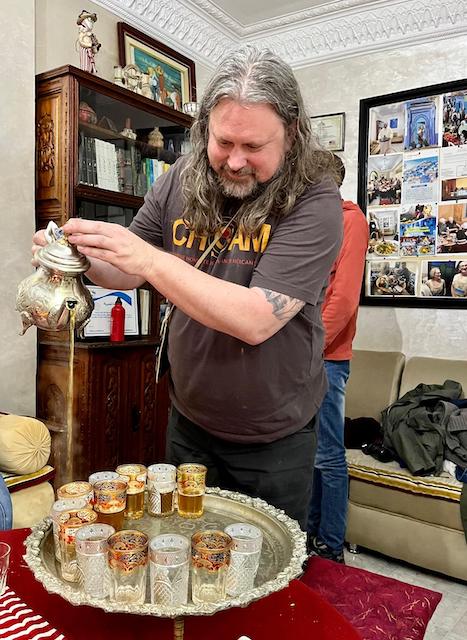
Image credit: Jonathan Jacobs
A few of the things we ate
The tour itinerary included several special meals in private homes along with meals in local restaurants. We were exposed to a wide variety of Moroccan foods. Here are some of the dishes we enjoyed, along with links to recipes we’ll be trying at home.
Msemen
Breakfast was usually simple and often included small pancakes, called msemen. Mike ate these with jam or honey. The small pastry in the picture had a crisp crust and a flaky, sweet inside.
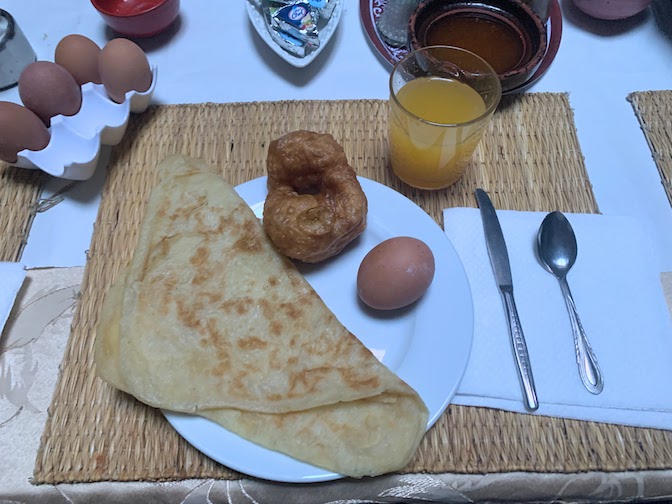
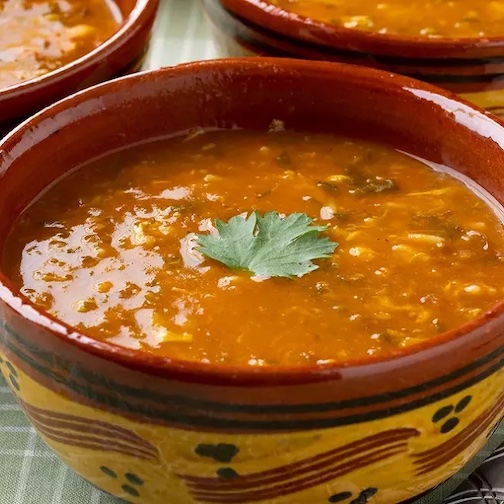
Harira
Harira, a rich Moroccan soup, was served at the beginning of almost every meal. It is made with tomatoes, lentils, chickpeas, onion, herbs and spices. Sometimes it included noodles or meat. Every time we had it, it was delicious!
Our tour took place just after Ramadan had ended, and we heard several times that harira was frequently eaten as the first food for breaking the fast at the end of the day.
Harira Recipe – Moroccan Tomato Soup with Chickpeas and Lentils
Image credit: cuisineaz.com
Camel burgers
Our first lunch as a tour group was on the way to the city of Meknes. Along the way we stopped at a small restaurant that served camel burgers on local bread. The meat was slightly dry with a mild, meaty taste.
We learned that camels are raised for meat and milk, much like cattle in other countries.
(We may not get to try this at home since we haven’t seen camel meat in the local grocery stores.)
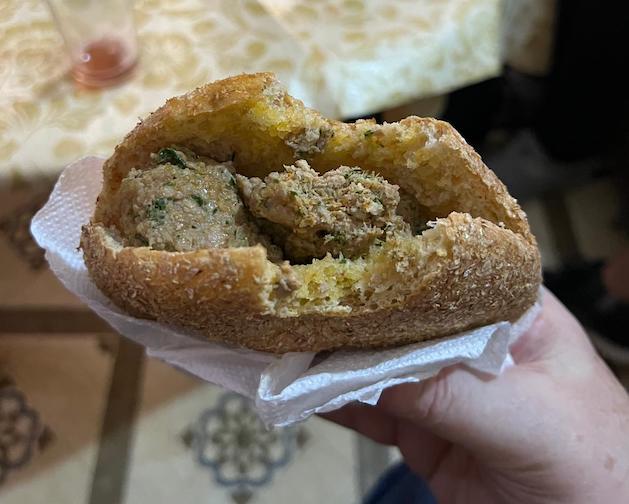
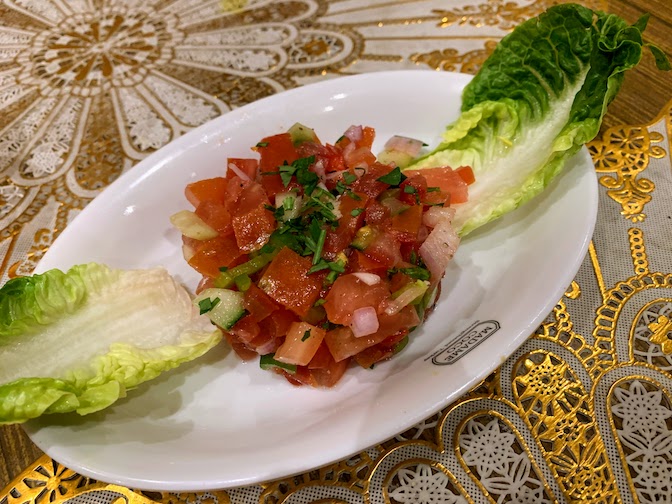
Moroccan Salad
This simple salad was another dish that we enjoyed whenever it was served. The ingredients and proportions varied with each presentation but generally included tomatoes, onions, and cucumbers seasoned with parsley, cilantro, olive oil, and lemon juice.
This is one we’re going to recreate at home.
Tagines and couscous
“Tagine” is both the name of the dish and the name of the earthenware pot with a conical lid that it is cooked in. They were an option or the central feature of almost every lunch and dinner.
The tajines we had in restaurants were meh, but the ones we had at dinners in private homes, like the one shown here, were delicious. The basics were consistent: a meat (we usually had chicken, but they are also made with beef and goat), slow cooked in the pot with large pieces of vegetables like potatoes, carrots, courgettes, and any others the cook liked.
And it wouldn’t be dinner without couscous. This is not the quick cooking stuff we got in the US. Moroccan style couscous is made by mixing the dry grain with water, fluffing it up, and steaming it – often in the upper part of a pot where vegetables are being prepped for the tagine. It’s then taken out and more water is added, more fluffing done, and then seasoned with olive oil.
After steaming once or twice more, the delicious grains are ready to eat.
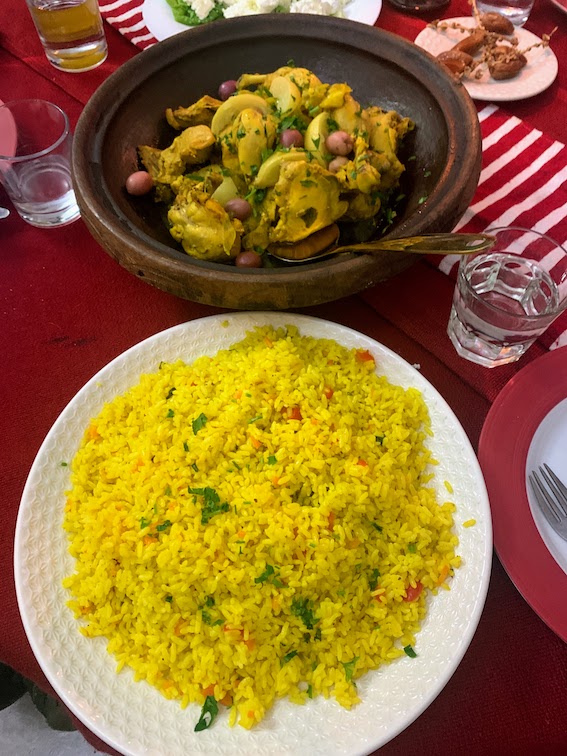
Pastilla (or B’stilla)
One of the most interesting meals we had during our trip was in a private home in Fes. Our hostess introduced us to the traditional Moroccan dish known as pastilla. This is a savory meat pie made with very thin pastry (like phyllo) that is washed with an egg mixture and then layered with meat, nuts, vegetables and spices. After it is baked, it is decorated with chopped nuts, honey, and cinnamon.
We took turns building one pastilla, with different folks adding the different ingredients. A short while later, we each enjoyed one of these unique dishes.
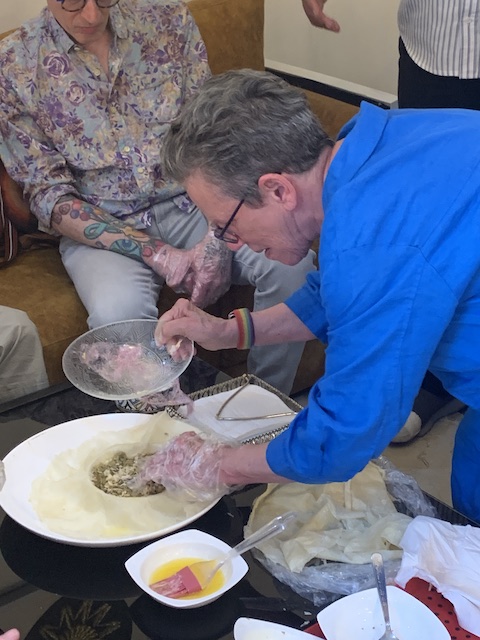
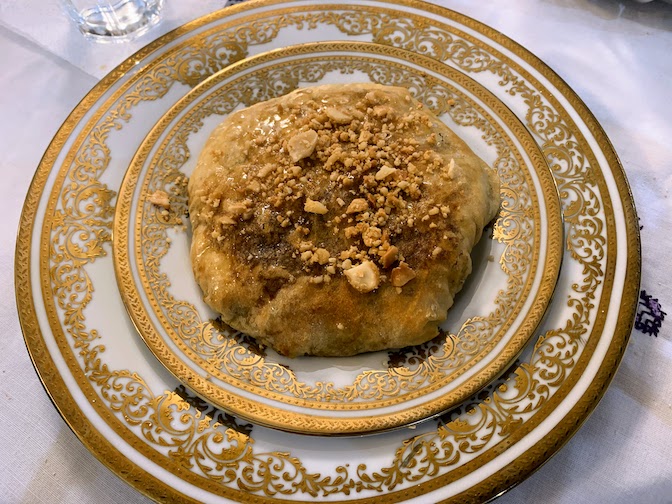
Fruit for dessert
We had simple desserts, like this one – a plate of sliced, ripe oranges. Sometimes they were sprinkled with cinnamon. Surprisingly light and refreshing.
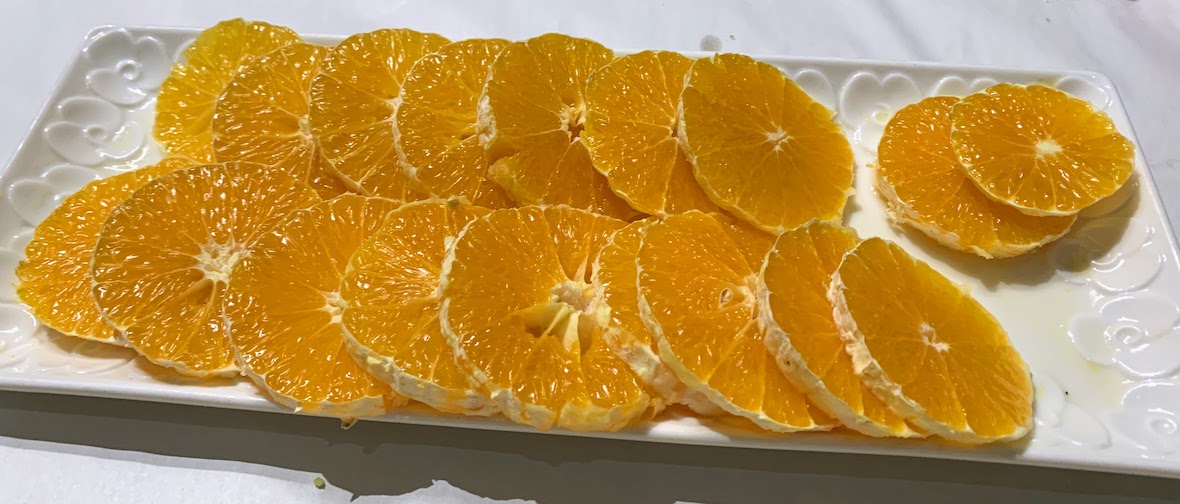
No recipe for this one. You know what to do!
A quick update on Sox
In our last post we talked about having to leave the tour early because Sox, our 14 year old Boston Terrier, got sick and had to be hospitalized. We were able to bring her home a couple days after we got back to Lisbon. Several of you have sent messages of concern and questions about how she’s doing.

Since we’ve been back, we’ve been working with the veterinarians to settle on the right set of medications to address Sox’s symptoms – inflammation of the stomach and intestines along with liver problems. She is doing OK. Her energy is good and her appetite is improving. Our goal is to keep her comfortable and allow her to live out her days without pain.
Adieu le Maroc
Our trip to Morocco was shorter than we planned, but we got to see a lot of the country and taste some of the unique Moroccan foods. It’s not likely that we’ll go back, simply because there are still so many places we haven’t visited yet. But we’re happy to have gone and would encourage anyone thinking about going to just do it!
Until next time / Até a próxima vez
Mary and Mike
The Cook and The Writer

Where in the world do you want to go, but haven’t booked a ticket yet. Tell us wherein the comments below or via the Contact Us form. We’ll give you a push!
- Alice Morrisey, “Adventures in Morocco”, p. 53.* ↩︎
* This link is direct to Amazon.com, but we do not receive any affiliate payment if you buy a copy. If that changes in the future, we’ll let you know. [Updated May, 2024]
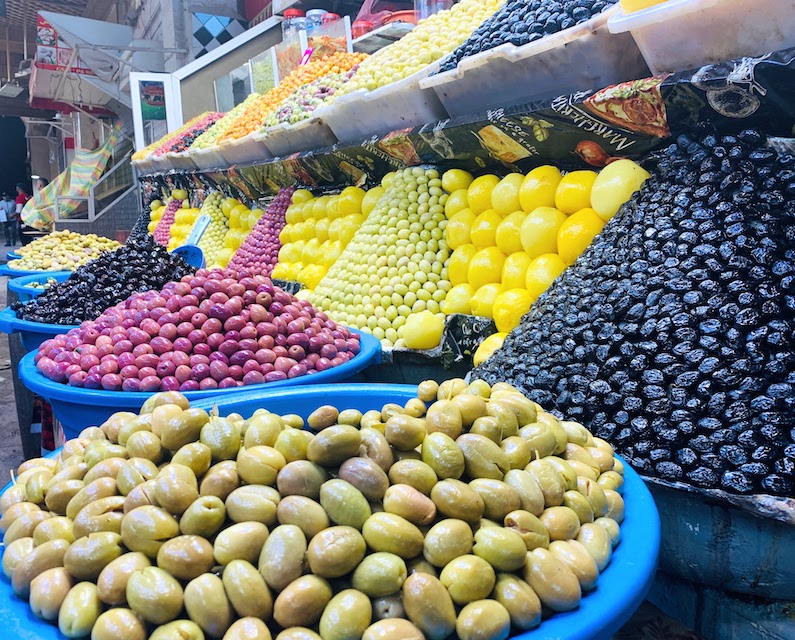

Comments are closed.